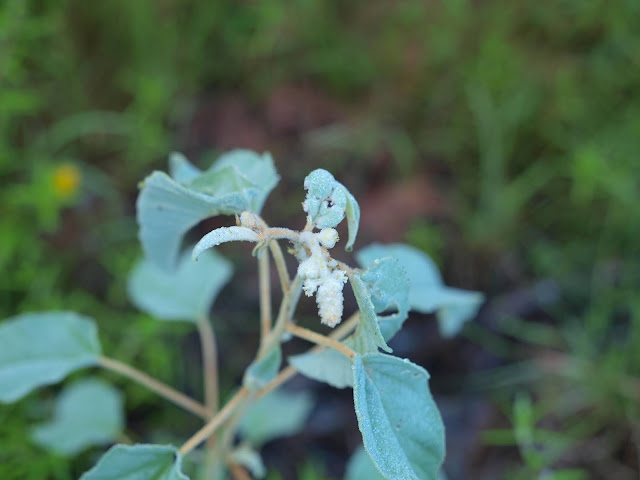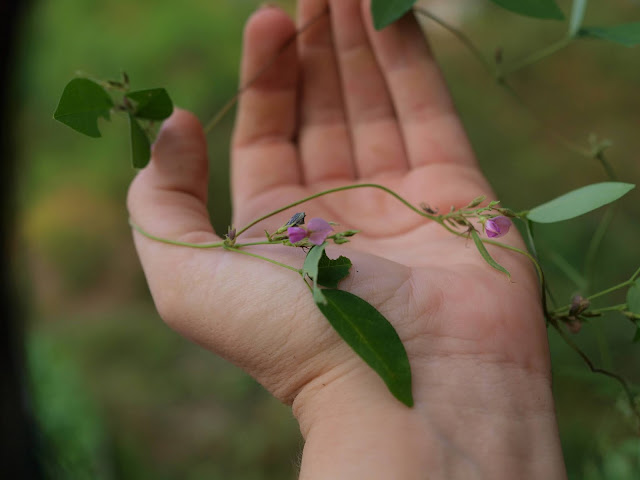Almanac August Sixth and Seventh

These whipporwill peas originated in Mansfield, TN from an Etsy shop that popped up in 2012 and has since disappeared. I don't have the lady's name anymore, but her first name was Barbara. She called them 'brown speckled whipporwill peas', and told me they had been growing in the area for at least a century. They are a type of the group of legumes called cowpeas. I have been trying to keep the variety alive by growing it out every few years. Although the 'purple-hull pea' is more popular around here, this item actually has a very long history and I actually find more success with keeping it as a mold-free dried seed than I have with the purple-hulls. I consider it an important historical local food. The best thing is it that grows well even in poor soil.
But, 2020 has been hard! The weather has been so unpredictable, and I am hearing reports of slow maturity in everything. Our tomatoes are finally starting to turn red, but I've seen others that are hit-and-miss... tables full in some households and others with green fruit still languishing on the vine.
This year I planted several handfuls of peas with the Cherokee White Eagle corn in March. Both of these were treated as 'heirlooms' and not given any special fertilizer or much more attention than just weeding and watering. Remember with the on-and-off cold snaps only two cornstalks came up, and that was weeks after the regular germination time when I had completely given up on them. However, even with the temps bouncing to 40 degrees F, these came up and formed their first true leaves in a few days. But, they have been growing VERY slowly ever since then. Until, just a few weeks ago, when they suddenly decided the weather was right. They have since crawled all over the fence in an explosion of growth, begun to flower, and produce pods. All of this in a relatively short amount of time!
some seeds for sale at the shop, until they're gone 
The dried seeds will be a light tan with lots of brown speckles on them, and over time in storage will turn darker and darker. They can be kept for use usually up to three years, and should be grown out at least every five from seed to keep them viable. I try to grow them out every two to three years, some years with more success than others.
 Most
years just a few plants produce cupfulls of dried peas, that can be
kept for months. I prefer to keep them in glass jars with a paper coffee filter kept over the top for breath-ability and moisture, but to keep all dust and insects out.
Most
years just a few plants produce cupfulls of dried peas, that can be
kept for months. I prefer to keep them in glass jars with a paper coffee filter kept over the top for breath-ability and moisture, but to keep all dust and insects out.A close-up picture with a dried pod. They often 'crook' like this, but the peas will be loose and rattly inside, and then you know they are ready for seed. Sometimes I will take the almost-dry pods and hang them up on a cotton string in a high and dry place until they are ready to split out into jars.

And I can't get too close to it, but this is another local pollinator that makes it's debut in early August. Devil's Walking Stick, or Aralia spinosa. Wikpedia says it is also called 'Angelica Tree' or 'Hercules Club' as alternate names, and grows all over the Southeastern United States. It has 'wicked' thorns on the branches that come up out of the ground. You definitely don't want to accidentally grab it in the brush in the fall (which I have, ONCE). Most of the time I am looking at it because it is covered in these very fragrant nectar-producing flowers that attract bees, butterflies and wasps! The wikipedia article says the fruit was eaten by native tribes, but I've never seen the fruit. Will have to look for it this year.
I've been down in a few riverbanks taking pictures, sorting some things out in a notebook - trying to remember and gather information out of my records about when certain plants are where so I can visit them and plan to visit them. We've talked about getting a pH meter and moisture meter and taking some soil samples to analyze from the riverbank that goes to the Mississippi vs the one that goes to the Tennessee River, both of those riverbanks being less than one mile apart. That interests me! I'm also collecting more photographs of interesting wild plants from the meadows nearby to identify later.
But today, and tomorrow - I'll be running the mail! So, just a little bit here and there, and off I go.






Comments
Post a Comment